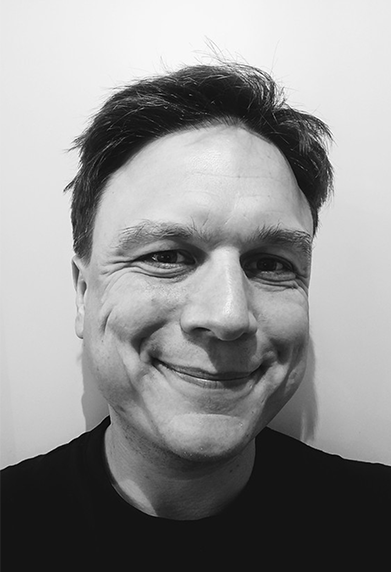This blog is based on a keynote speech delivered at the International Civic Forum 2022 (ICF 2022), the Centre’s annual civic space platform to network, build trust and identify opportunities for collaboration on emerging issues. The ICF 2022 focused on “Anticipating Futures for Civil Society Operating Space”. It kicked off a three-year initiative to strengthen anticipatory capacities and future readiness of civil society professionals working to defend civic and civil society operating space.
Every one of us wants to change the future.
That could mean making a difference to the life of one person, altering the entire course of history through revolution, or stopping the rise of the oceans as our climate crises deepens.
We’re all here because we want to make an impact on complex, messy issues, and that takes time. So, every day we make decisions, we implement plans, we deliver services. We move forward.
Understanding possible futures
All of these actions are intended to influence the future. We’re working to create something new or to prevent something worsening, to change somebody’s life or to remove injustices that affect us all.
But how well do we understand the future? How often do we explore the possibilities? When do we visit plausible future worlds to understand the challenges and the opportunities?
Or is ‘the future’ obscured, a grainy, opaque continuation of today with a bit more technology, a change in government, new fashions and a flying car or two?
Something that happens to us, rather than something we actively shape.
Connecting to the future
Part of everyone already lives in the future; a little corner of your brain and a collection of emptions is always there.
You might never have noticed but they are. Listen to them now.
I want you to put yourself on this grid. Move yourself up or down, depending on whether you are optimistic or pessimistic about the future. Move left or right depending on whether you think you can make a difference or can’t make a difference.
When I do this exercise with humanitarians, activists and civil society organisations, I always see lot of green and blue…
We tend to have a relatively pessimistic – or maybe realistic – view of the future but feel we can make a difference, which can give us hope. We wouldn’t be here if we didn’t.
But not everyone feels like that… because people don’t all have equal access to the future.
Entire groups of people are down there in the bottom left; disempowered, scared, angry, ignored and excluded by the system that is shaping the future they will have to live in.
Participants at the International Civic Forum share their feelings about the future.
Who shapes the future?
So many people are not asked or involved in reimagining the future, even by the people who say they’re here to support them. They are just expected to exist in it once it arrives. They are stripped of power now, and they are denied power over the future.
What can civil society do? We can give people a path to other side of that grid, where they feel they can make a difference, where they have the power to imagine a world that has a place and protection for them. (That means involving people, amplifying their voices, championing their perspectives).
And the institutions we run have to constantly navigate and shape that future. They have to become better at anticipating shocks and considering the implications of emerging trends. It has to be part of our daily operations, the mechanics of how our organisations function.
How do we do that? Thankfully, all humans have an amazing ability to time travel….
Storytelling and strategic foresight
Storytelling is deeply human. It is part of who we are as a species. We tell stories as individuals, as families, as organisations, as sectors and societies.
And that is what gives us this amazing ability to time travel; we can project ourselves into possible futures and tell others about it.
We all do it, all the time. It is how we make plans to meet at the weekend, how we set ourselves goals, how we organise our communities to take on a new challenge, it is how we mobilise people in politics and it’s how we ferment revolutions.
We tell stories about different visions for the future and ask for help to make it happen.
All the people who make real change in the world are futurists, whether they call themselves that or not; they have had the courage to question things and imagine something which is not yet visible.
Strategy and possible futures
Organisations already tell stories about the future all the time. We create visions and strategies, growth trends and budget projections.
We tell the story via formal documents and spreadsheets (to make it seem rational and reliable), but it is still a story about how we want the world to be, and how we will work to make it happen. And they are full of assumptions about what the future will be like.
But how many organisations consider what the world might be like when that strategy is supposed to thrive….? How many create different versions? And how many keep an eye on the weak signals and emerging trends that will shape the world tomorrow?
A nice strategy or vision is not enough. Our organisations need to be constantly engaged with possible futures, constantly anticipating risks and moving fast on opportunities, and we need to shift to anticipatory governance models to enable that.
Anticipating the future
This is critical because, left to their own devices, humans are actually not great at anticipating the future.
There are lots of psychological reasons – from optimism bias to data blindness, shifting baseline syndrome to an overreliance on past experience – so we need a more systematic way to explore the future, to add evidence to our imaginations, to create, examine and explore different possibilities.
Strategic foresight is a useful set of ideas, tools and methods that can help with this.
Emerging trends and change
Where do we start?
The world constantly changes. It can seem overwhelming. We are already living in a pretty dysfunctional dystopia. How do you start to make sense of today, let alone things that haven’t even happened yet?
There are some forces which shape human history and society, and always will. So, mapping some of those big drivers of change is a helpful starting point.
For example, politics shapes our lives and the history of our country and communities. It will continue to be a powerful force even as the personalities change, the institutions erode, and new movements emerge.
Gathering evidence
Civil society can act as a sensing network to spot things early and understand their impact in different places.
We must gather evidence, add detail, identify emerging trends and layer on different types of information. Add anthropological research and consultation to the mix, asking people about their changing world and hopes or fear for the future.
All of these elements help us to start spotting patterns and see the connections between seemingly random issues – they let us start to make sense of that overwhelming change.
And from this we begin to structure different possible futures and detailed scenarios. These artefacts become really useful tools for discussion; they open space for people to connect, talk and challenge assumptions about the future and imagine different possibilities.
Using strategic foresight
What do we do with it? Strategic foresight can be used in several ways.
We have already mentioned strategic planning: by expanding the range of alternative futures we plan for we are better prepared for the challenges we face.
Foresight also helps us deal with uncertainty and complexity by improving our understanding of emerging risks, issues and their potential implications.
In a sector well known for being risk-averse, this can only be a good thing.
I think that considering the future is a critical element for good innovation. Plausible, powerful scenarios are useful places to innovate in because there are new opportunities and challenges there.
It is also critical to consider the world any innovation will grow into – is your latest product or service ready for the future? Can you build anything into it as it grows which will make it stronger tomorrow?
And it is not all about speculation and innovation. You can use strategic foresight to stress-test decisions that have to be made now.
When you are choosing between option a and option b, you can walk them into the future and see if they will cope with a changing world or if they need to be rethought or refined now.
Critically, strategic foresight allows you to bring people together, to explore and negotiate a better world. It can create a shared vision that generates new energy, enthusiasm and hope.
All of this means we become better at anticipation: “identifying and preparing sooner for new opportunities and challenges that could emerge in the future” (UN) and we can bring people with us to face them, we can redirect finances, and we can mobilise resources.
I look to the future because that’s where I’m going to spend the rest of my life. – George Burns
Anticipation, surprise and action
Why is it important?
Strategic foresight is not about predicting the future. It is about avoiding surprise and shocks, about having more time to respond, and about actively working towards a future we believe to be better than today.
Because if we – as Civil Society organisations – don’t do that, we’re carrying the inequities of the past into the future and accepting that the injustices and inequalities that we’ve inherited from the past will inevitably be part of the future. We can do better than that. We can imagine a more hopeful future, and we have the power to deliver it, or at least fight for it.
Shaping the future
A lot of futures and foresight work is currently carried out by governments, corporations and the military. If they are deciding what humanity’s future should look like, it will reflect the biases and privilege of the people with power in those institutions.
Remember, Civil societies great strength is its reach and its diversity.
As my friend and futurist at the UN Aarathi Krishnan says: “Being more anticipatory necessitates being more participatory”.
We can surface new information and new stories. We can challenge the fact that not everyone gets an equal say in the future.
Done well, futures and foresight work can bring very diverse groups together and open up new options for action.
It can be a radical approach as it challenges short-term interests and hierarchy. It can create a new space for debate and a new horizon – beyond the election cycle or the next shareholders meeting.
Start by changing today
Good futures should challenge the world to consider different perspectives, different impacts, different needs and hopes so we can create new futures with new power structures, new representation and inclusion, and new ways to deliver powerful change.
We can imagine and champion these different futures.
It will take time to make them real. And that is why we need to start today.










